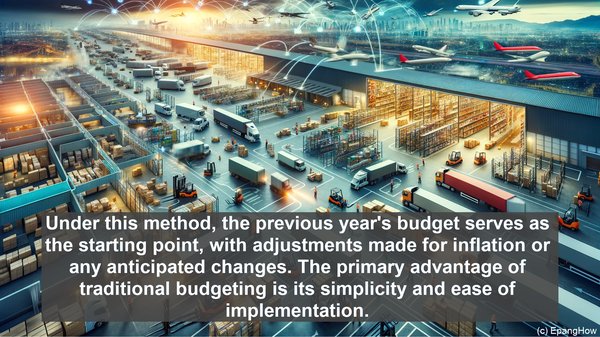Introduction: The Crucial Role of Budgeting
Hello everyone, and welcome to today’s article. Budgeting is a critical aspect of any organization’s operations. It involves the allocation of resources, financial or otherwise, to various activities and projects. Today, we’ll be exploring two distinct approaches to budgeting: performance budgeting and traditional budgeting.
Traditional Budgeting: The Foundation
Traditional budgeting, also known as incremental budgeting, is a widely used approach. It relies on historical data as the primary basis for resource allocation. Under this method, the previous year’s budget serves as the starting point, with adjustments made for inflation or any anticipated changes. The primary advantage of traditional budgeting is its simplicity and ease of implementation. However, it has its limitations, which we’ll discuss shortly.

Performance Budgeting: A Paradigm Shift
Performance budgeting, on the other hand, takes a more strategic and outcome-oriented approach. It focuses on the objectives and goals of an organization, with resources allocated based on the expected results. This method requires a clear understanding of the desired outcomes and the metrics to measure them. By linking budgeting to performance, organizations can prioritize activities that directly contribute to their mission. However, performance budgeting can be more complex to implement, requiring robust performance measurement systems.
Benefits of Performance Budgeting
Performance budgeting offers several advantages over the traditional approach. Firstly, it promotes transparency and accountability. By clearly linking resources to outcomes, it becomes easier to track the effectiveness of spending. Additionally, performance budgeting encourages efficiency. Resources are allocated based on their expected impact, ensuring optimal utilization. Finally, this approach facilitates evidence-based decision-making. By considering the expected results, organizations can make informed choices about where to allocate resources.

Challenges in Implementing Performance Budgeting
While performance budgeting has its merits, it also presents challenges. One of the key difficulties is the need for robust performance measurement systems. Accurate and reliable data is crucial for effective performance budgeting. Additionally, there can be resistance to change, as this method requires a shift in mindset and processes. Moreover, performance budgeting may not be suitable for all types of activities. Some areas, such as research and development, may have less tangible outcomes, making it harder to link resources to performance.
The Role of Traditional Budgeting
While performance budgeting offers many advantages, traditional budgeting still has its place. It can be particularly useful for stable and predictable activities, where historical data provides a reliable basis for resource allocation. Additionally, traditional budgeting can serve as a benchmark for evaluating the effectiveness of performance budgeting. By comparing the outcomes of both approaches, organizations can refine their resource allocation strategies.
